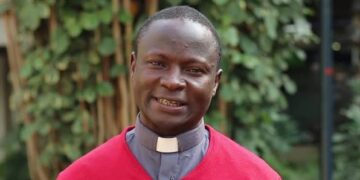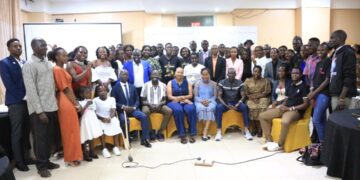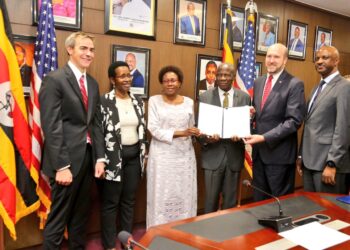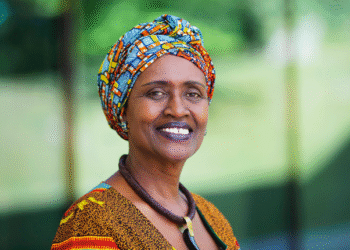By Gilbert Akampa,
KAMPALA
In Uganda, many women and girls continue to face barriers to accessing safe and legal abortion. Health professionals and Sexual Reproductive Health and Rights advocates attribute this to unfair legal frameworks, stereotypes surrounding abortion and other SRHR issues. As a result, many people including students, teenagers, sex workers, and married women, turn to unlicensed health workers, traditional birth attendants, or herbal drugs to procure abortion, often risking their lives.
Constitutionally, abortion is illegal except to save a woman’s life, making safe and legal options scarce.

“Safe abortion is a public health concern in Uganda due to the health risks such as the increased rate of maternal mortality, lack of access to safe abortions leading to injuries and many complications like PAH (post-abortion haemorrhage),” says Nayebare (given name not disclosed for professional reasons), a practicing midwife in Kampala.
“We are seeing a growing number of cases, primarily involving young students aged 17 to 19 in secondary schools, and 20 to 25 in universities and tertiary institutions, with fewer requests coming from couples,” she said, stating that many of the victims present lack of the information regarding contraceptives and abortion service care.
A Hidden Crisis and What the Law Says
Uganda’s Penal Code criminalizes abortion except under very limited circumstances, a fact that has left women and girls vulnerable.
Uganda’s law explicitly allows for access to safe and legal abortion only to save a woman’s life (Article 224, Uganda Penal Code). Also, the 2006 National Policy Guidelines and Service Standards for Sexual and Reproductive Health and Rights (SRHR) allows abortion under additional circumstances, including in cases of foetal anomaly, rape and incest, or if the woman is HIV-positive and/or has cancer of the cervix.
But, Nayebare who requested us not to disclose her other name because of professional reasons says there are still gaps in the laws. She argues that the legal ambiguity and lack of clear guidelines have created a system where fear thrives, both for patients and health professionals.
“The laws on abortion restrict girls from accessing safe abortion services and even information about where or how to get these services,” she explained. “And they create great fear for health professionals, stopping them from rendering the service even when they can.”
For many Ugandan women, this means seeking help from unauthorized and often untrained providers. These risky procedures are frequently carried out in unsanitary conditions, increasing the likelihood of life-threatening complications such as infections, perforated uteruses, and severe bleeding.
Justus Ampaire, an abortion advocate and Clinical Officer at St. Augustine Community in Mbarara City, echoes the concern: “There are relatively few health professionals licensed to carry out the procedure. Also, there are limited health centres allowed to perform abortions. So ladies struggle hard to find the appropriate services.”
The Drivers Behind the Decision
In Africa and Uganda in particular, abortion is often portrayed in harsh, moralistic tones in public discourse. But those on the frontlines of care understand the complexity behind each decision.
“There are many causes driving women and girls to seek abortions,” Nayebare says. “Early pregnancy, especially among school-going children, is a major one. Then there are unwanted pregnancies; when someone or a couple isn’t ready for a baby, or cannot afford it due to poverty. Some working conditions also force women into this decision, as some employers won’t accept a pregnant employee.”
The reality is far more nuanced than the law allows for. Women are balancing economic survival, education, and societal expectations. With legal pathways blocked, unsafe options become the only viable ones.
Unsafe abortion remains one of the leading causes of maternal death and morbidity rates in Uganda. The Uganda Demographic Health Survey 2016 states that the maternal mortality ratio is still high at 336 per 100,000 live births, and maternal deaths are estimated at 16-18 per day with 4-6 deaths attributed to unsafe abortion. According to the ministry of health National Annual Maternal and Perinatal Death Surveillance and Response (MPDSR) Report FY 2022/2023 report, abortion complications contributed at least 6% of the reported maternal deaths. Additionally, the Guttmacher Institute reports that over 75% of abortions in Uganda are unsafe, contributing significantly to maternal mortality.
A Call for Change
Health professional and public health advocates argue that Uganda’s restrictive laws do not reduce abortions, they only make them unsafe. They appeal to the government and policy makers to put in place policy reforms that prioritizes the health, dignity, and autonomy of Ugandan women and girls.
“Criminalizing abortion does not stop it. It only drives it underground,” Nayebare stressed. “We need a system that gives women a chance. Access to safe abortion and post-abortion care should be a health issue, not a crime.”
“People should be given a chance to choose what happens to their bodies,” Ampaire echoed. “I’m always praying that the law allows a woman to procure abortion if they want. Safe abortion is possible”
Ampaire, who uses social media, especially TikTok to advocate for SRHR, urged the government to ensure comprehensive sexuality education in schools, expand access to contraceptives, and implement the SRHR policy framework, including clear guidelines for health workers on providing safe abortion services.
In a country where the law forces silence and secrecy, many women and girls accessing safe abortion services are at risk of succumbing to preventable deaths. But health professionals like Nayebare and Ampaire hope that shedding light on these stories will spark change.







































